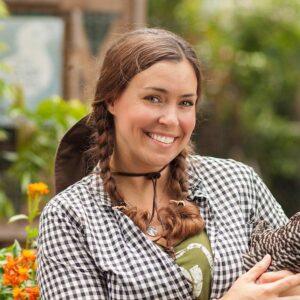When you spend time in nature and study what’s growing around you, it makes plant selection and placement for your new garden a cinch.
Planning a garden and transforming a space is very exciting, but some aspects of it can be overwhelming for some people. In fact, the question I hear most when helping others design their outdoor space is what plants will work and where.
The reason I think that’s what stumps people the most is because purchasing all the plants and mulch necessary to redesign a landscape can be quite an investment. So, people worry about making the wrong choices and ultimately wasting a lot of money.
But I’ll let you in on a little secret to gardening — take a hike. And by that I mean walk through a park or natural area nearest to your home and pay close attention to the vegetation.
Therein lies the answer to the proverbial question, “What do I plant?”
Five key things you’ll learn on your trek:
1 – What plants thrive without supplemental water. If the plants in a natural area look good with no supplemental water, then they’ll look great in a non-irrigated portion of your yard. Many of the plants you’ll see are included in the WaterSaver Landscape Coupon.
2 – What plants are thriving in the sun and look pretty grouped together. Look at sunny areas of the park, areas that are in full scorch. Take note of the plants that are thriving. Also, notice what plants naturally group together and which combinations you like best.
3 – Which plants are thriving and grouped together in the shade. I’ll admit, shade gardens can be tricky. But not if you pick native Texas shade-loving plants suitable for your site conditions. No need to sample random plants to see if they’ll work in your space. Just pick the ones that work in nature and they’ll work for you!
4 – The plants that’ll work for your landscape’s type of soil. This is why it’s important to visit a park or natural area nearest to your home. Example, if you live in a part of the city that has blackland prairie clay soil, check out Hardberger Park; if you live in solid rock north of 1604 you’ll want to check out places like Friedrich Park or Stone Oak Park that are typical of the Edwards Plateau and the Hill Country.
5 – What plants are suited for your site’s conditions. If you have a steep slope in your yard, you’ve probably noticed how difficult it is to grow and irrigate a lawn. Do you know what’s not hard to grow on a sunny or shady slope that you don’t have to irrigate? Native plants that like to be on slopes in those conditions.
When you spend time in nature and study what’s growing around you, it makes plant selection and placement for your new garden a cinch. Doing the research as part of your planning process will help ensure your garden is a success.
More importantly it will be a true water-saving garden that will continue to save you money in the coming years.


